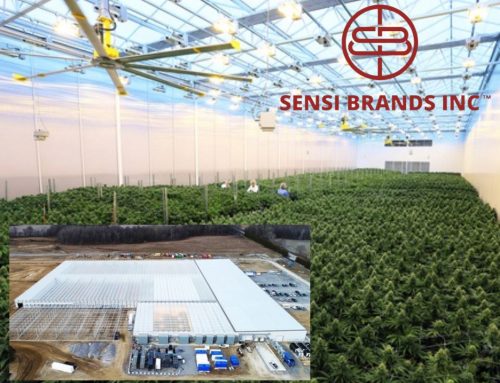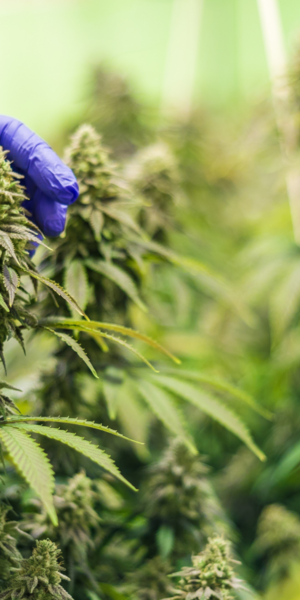Cannabis Industry Forecast for 2025: A Year of Transformation
LOS ANGELES—As the calendar turns to 2025, the cannabis industry stands on the brink of transformation. This year could mark a pivotal point, shaped by evolving policies, shifting consumer preferences, and new market opportunities on both local and global scales. Let’s explore the trends and challenges that could define the cannabis landscape in what promises to be a critical year.
National and Global Trends
Will the U.S. Reschedule Cannabis?
One of the most significant developments on the horizon is the potential rescheduling of cannabis in the United States. In 2023, the Department of Justice initiated a process to reclassify cannabis from a Schedule I to a Schedule III substance. This change would remove cannabis from the same category as heroin and LSD and place it alongside substances like Tylenol with codeine, signaling a more lenient federal stance.
Progress continued in 2024, with the DEA’s Notice of Proposed Rulemaking and a formal hearing on the matter. However, delays have pushed the timeline, and a final decision is not expected until late 2025. If successful, rescheduling could be a game-changer for the industry. Cannabis businesses would gain access to critical banking services, patent protection, and relief from the IRS’s 280E tax code, which currently prohibits standard business deductions.
The path forward is uncertain, especially after Donald Trump’s recent re-election. Trump’s administration may continue his historical stance of leaving cannabis policy to the states, but there’s speculation he could support rescheduling if it aligns with states’ rights and GOP priorities. However, reform must ultimately come from Congress—not from Trump or his cabinet—so it’s important to remember that any substantive change requires legislative action. Meanwhile, Trump’s pick for Secretary of Health and Human Services, Robert F. Kennedy Jr., has expressed support for natural medicine, offering cautious optimism for reform.
Global Expansion Accelerates
Globally, cannabis markets are thriving. Germany’s adult-use program is set to be a model for other European nations, while Thailand continues to expand its medical cannabis offerings. These advancements could influence international trade and investment, creating new opportunities for global operators.
In Canada, Health Canada is proposing changes to streamline licensing and reduce administrative burdens, which could energize the market. Simplified production requirements and increased limits for micro-cultivators are among the measures under review. These reforms aim to sustain growth in Canada’s maturing market while fostering innovation.
Banking and Legalization Hurdles
The SAFE Banking Act remains a contentious issue in the U.S. After passing the House with bipartisan support, it faced delays in the Senate and is unlikely to pass before the current Congress adjourns. This setback means cannabis businesses will continue to struggle with limited access to financial services, though a new legislative push in 2025 could revive hope for banking reform.
Local Impacts and Trends
Which States Will Legalize Next?
Several states are poised to legalize cannabis in 2025. Ohio’s recent vote to legalize adult-use cannabis will lead to the rollout of its market early this year, while Minnesota is expected to begin recreational sales, adding to the 24 states where adult-use cannabis is already legal. Meanwhile, traditionally conservative states like South Carolina and Kansas have introduced bills to legalize medical cannabis, signaling a shift in attitudes toward cannabis nationwide. Most think too Pennsylvania will come on line this year but there are a number of obstacles yet to be cleared in that state prior to adult-use passing.
Consumption Lounges Flourish
As the stigma around cannabis fades, local markets are embracing consumption lounges as social hubs. These lounges offer consumers a space to enjoy curated experiences, from sampling premium products to engaging in educational events. For local operators, lounges represent a way to differentiate their offerings and build community connections.
Hyper-Localized Growth
Smaller operators focusing on hyper-local markets will gain an edge in 2025. By tailoring products and services to meet the unique needs of their communities, these businesses can compete with larger, multi-state operators. Organic practices and transparency will continue to resonate with consumers seeking sustainable and ethical choices.
Hemp Sector in Flux
The hemp industry faces its own set of challenges. The proposed Rural Prosperity and Food Act could redefine hemp by capping total THC content—including all forms of THC—at 0.3%. This change could impact CBD and other hemp-derived cannabinoids, forcing businesses to adapt to stricter regulations. Despite these hurdles, the versatility of hemp, including its use in sustainable building materials like hempcrete, keeps it a vital part of the cannabis ecosystem.

California and New York: Battling Industry Woes
California and New York, two of the largest cannabis markets, are grappling with significant challenges that could shape the industry’s future. In California, over-taxation, illicit market competition, and regulatory complexities have led to a wave of business closures. Calls for tax reform and regulatory simplification are growing louder, but progress has been slow.
New York’s rollout of its adult-use market has been marred by delays and legal challenges. The state’s social equity program, intended to prioritize minority-owned businesses, has faced criticism for its sluggish pace and lack of transparency. As lawsuits pile up and retailers struggle with limited product availability, the state’s cannabis market remains in flux. Addressing these issues will be critical for both states to maintain their status as industry leaders.
The Role of Product Innovation
One of the industry’s persistent criticisms has been its lack of product innovation. While flower, edibles, and vapes dominate the market, there’s growing demand for new and unique offerings. Rescheduling could unlock funding for research and development, paving the way for advancements in formulations, delivery methods, and product categories.
Companies that invest in innovation—whether through technology, alternative cannabinoids, or new consumption methods—will likely capture the attention of consumers and investors. This focus on differentiation could be the key to long-term success in a competitive landscape.
Market Consolidation and M&A Activity
The cannabis industry is set for another wave of mergers and acquisitions in 2025. Larger operators with access to capital will find opportunities to acquire distressed assets, expanding their market share and operational capabilities. As Steven Ernest, Vice President of Originations for Chicago Atlantic, noted at MJBizCon, “It is always darkest before the dawn, and now is the time to be aggressive and acquire cash flow-generating assets.”
This consolidation trend is driven by price compression, over-regulation, and high tax burdens, which continue to challenge smaller operators. However, well-capitalized companies that can weather these difficulties will emerge stronger and more competitive.

Cannabis Research and Development
If rescheduling succeeds, it could open the door for cannabis research funded by healthcare and wellness sectors. This would accelerate the development of medicinal cannabis applications, including treatments for chronic pain, anxiety, and epilepsy. Companies like Maridose, a DEA-licensed cannabis producer, are already seeing increased interest from research institutions and commercial entities.
Sales Growth Despite Challenges
Despite ongoing challenges, the U.S. cannabis market remains on a growth trajectory. Sales are projected to reach $71.8 billion by 2028, driven by legalization efforts and new market entrants. Minnesota is expected to begin recreational sales in 2025, adding to the 24 states where adult-use cannabis is already legal. Meanwhile, South Carolina has reintroduced a bill to legalize medical marijuana, signaling progress in traditionally conservative states.
Major Players Moving Forward
Leading cannabis companies like Curaleaf Holdings, Trulieve Cannabis, and Green Thumb Industries continue to dominate the market. These multi-state operators benefit from economies of scale and strong brand recognition. Meanwhile, Canopy Growth’s extensive patent portfolio positions it as a leader in research and innovation.
Smaller players are also making strides. For example, Vireo Growth, formerly Goodness Growth, recently raised $75 million in equity financing to expand its market share and acquire single-state operators. This demonstrates that even lesser-known companies can thrive with strategic planning and strong leadership.
Looking Ahead
The cannabis industry in 2025 will be defined by transformation. Rescheduling and banking reform could usher in a new era of opportunity, while global markets continue to expand. Locally, the rise of consumption lounges and hyper-local strategies will create space for smaller operators to thrive.
Innovation, consolidation, and sustainability will shape the industry’s future. Whether through groundbreaking products or strategic mergers, businesses that are highly capitalized and can adapt to changing conditions will emerge as leaders in this rapidly evolving market.



































